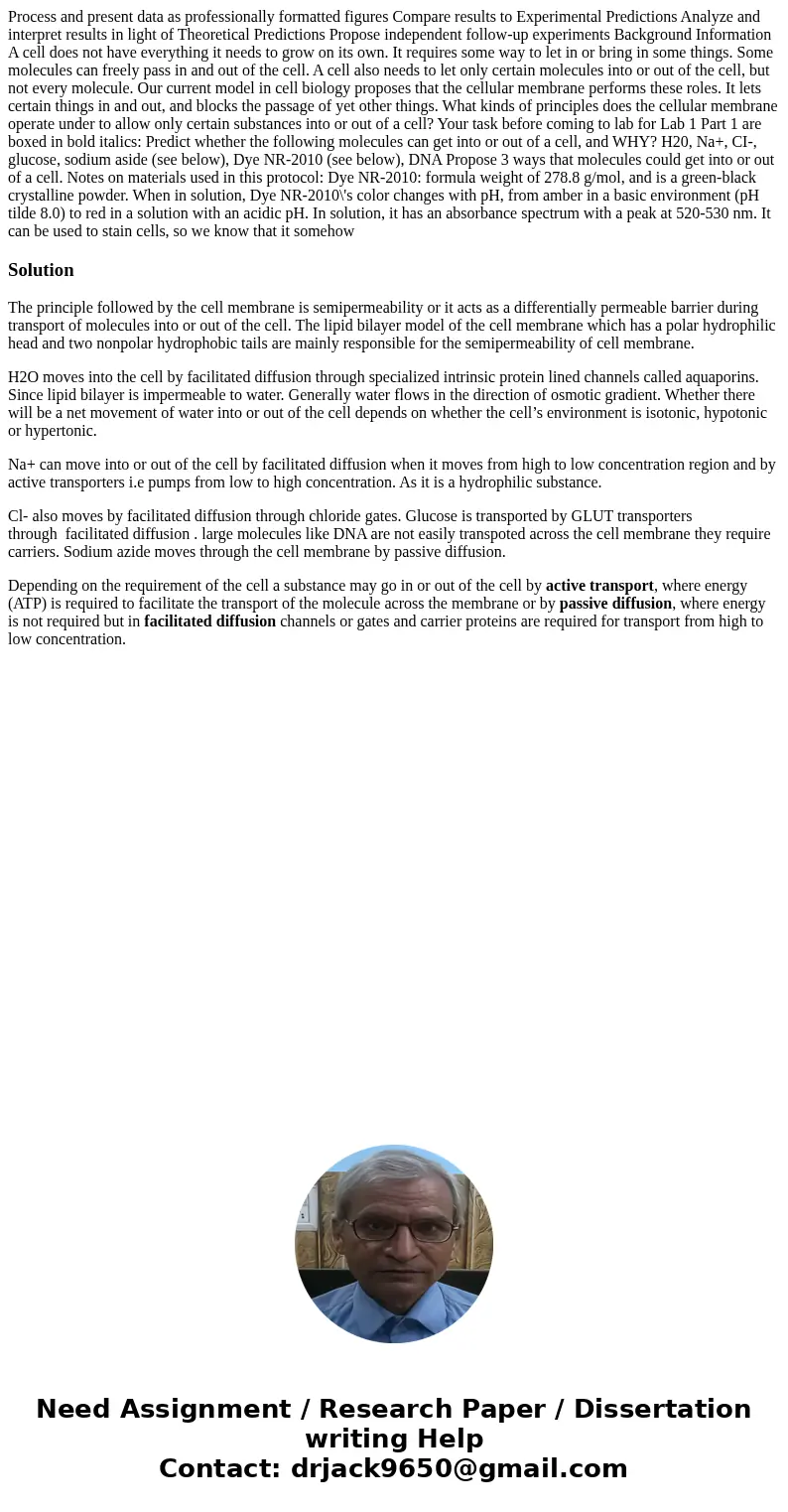Process and present data as professionally formatted figures
Solution
The principle followed by the cell membrane is semipermeability or it acts as a differentially permeable barrier during transport of molecules into or out of the cell. The lipid bilayer model of the cell membrane which has a polar hydrophilic head and two nonpolar hydrophobic tails are mainly responsible for the semipermeability of cell membrane.
H2O moves into the cell by facilitated diffusion through specialized intrinsic protein lined channels called aquaporins. Since lipid bilayer is impermeable to water. Generally water flows in the direction of osmotic gradient. Whether there will be a net movement of water into or out of the cell depends on whether the cell’s environment is isotonic, hypotonic or hypertonic.
Na+ can move into or out of the cell by facilitated diffusion when it moves from high to low concentration region and by active transporters i.e pumps from low to high concentration. As it is a hydrophilic substance.
Cl- also moves by facilitated diffusion through chloride gates. Glucose is transported by GLUT transporters through facilitated diffusion . large molecules like DNA are not easily transpoted across the cell membrane they require carriers. Sodium azide moves through the cell membrane by passive diffusion.
Depending on the requirement of the cell a substance may go in or out of the cell by active transport, where energy (ATP) is required to facilitate the transport of the molecule across the membrane or by passive diffusion, where energy is not required but in facilitated diffusion channels or gates and carrier proteins are required for transport from high to low concentration.

 Homework Sourse
Homework Sourse